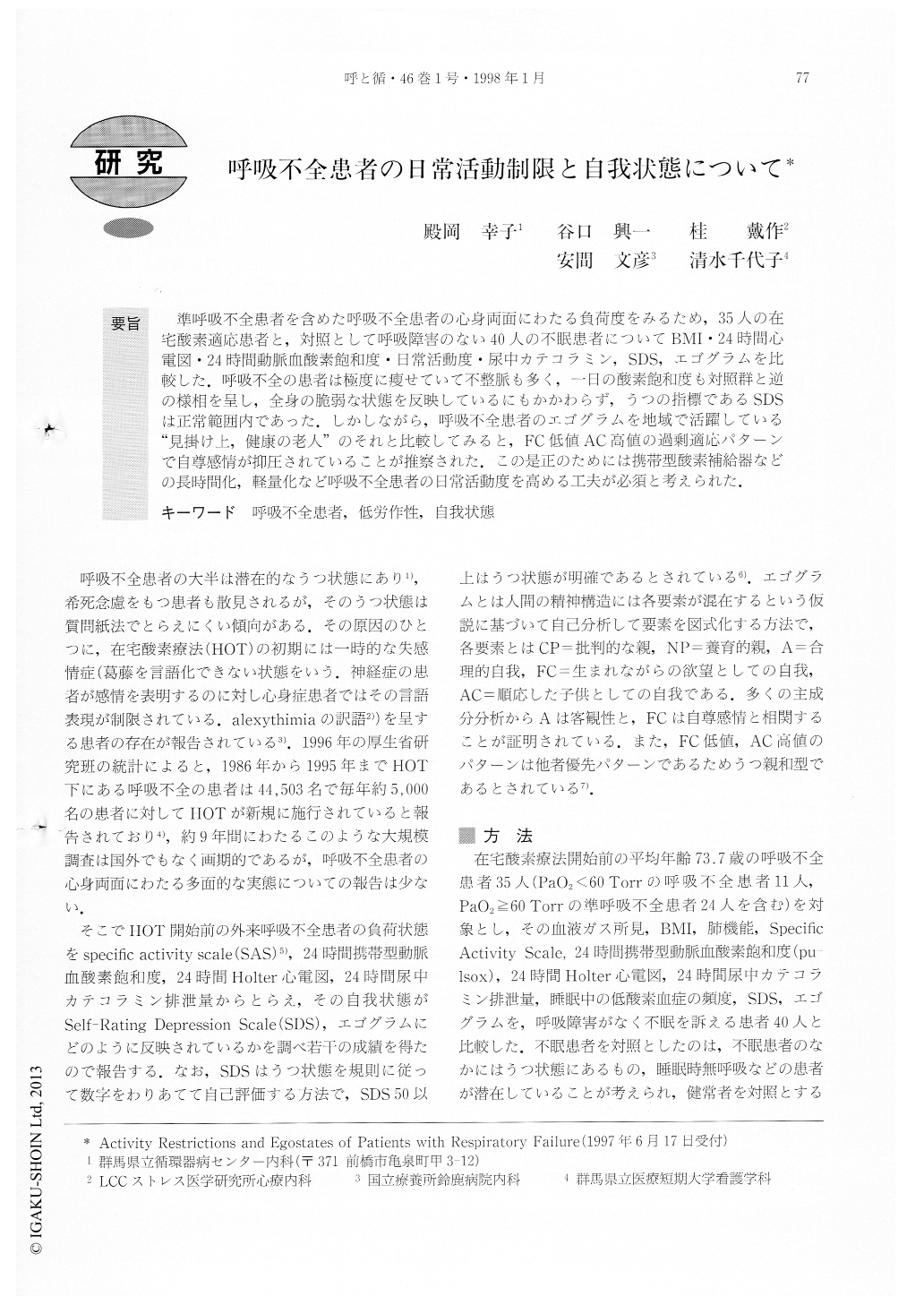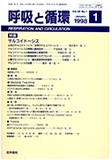Japanese
English
- 有料閲覧
- Abstract 文献概要
- 1ページ目 Look Inside
準呼吸不全患者を含めた呼吸不全患者の心身両面にわたる負荷度をみるため,35人の在宅酸素適応患者と,対照として呼吸障害のない40人の不眠患者についてBMI・24時間心電図・24時間動脈血酸素飽和度.日常活動度・尿中カテコラミン,SDS,エゴグラムを比較した.呼吸不全の患者は極度に痩せていて不整脈も多く,一日の酸素飽和度も対照群と逆の様相を呈し,全身の脆弱な状態を反映しているにもかかわらず,うつの指標であるSDSは正常範囲内であった.しかしながら,呼吸不全患者のエゴグラムを地域で活躍している“見掛け上,健康の老人”のそれと比較してみると,FC低値AC高値の過剰適応パターンで自尊感情が抑圧されていることが推察された.この是正のためには携帯型酸素補給器などの長時間化,軽量化など呼吸不全患者の日常活動度を高める工夫が必須と考えられた.
The study was conducted to evaluate both physical and mental overloads of 35 patients (Mean age 73.7) with respiratory failure including prerespiratory failure.
Body mass index (BNB), specific activity scale, 24hr Holter ECG, 24hr pulse oximetric monitoring, 24hr urinary secretion of catecholamine, respiratory function tests, self-rating depression scale (SDS) and egogram were compared with 40 insomniac patients without respiratory diseases, as controls (Mean age 73.6).
Mean blood gas analysis of patients with respiratory failure was 60±15.2 Torr for Pa02, 44.4 ±9.4Torr for PCO2 and 7.426 ±0.617 for pH, respectively.
Home oxygen therapy (HOT) was started after mea-surements.
Exhaustion and malnutrition represented in BMI with 18.1, poor activity scales (2.27Mets), prevalances of arrhythmias (1259 for PAC, 334 for PVC) and reciprocal patterns of 24 hr oximetric monitoring (93.7%) and lim-ited percent vital capacity (64.2%) of patients with respi-ratory failure demonstrated their chronic exposure to severe hypoxia and their occult cardiac dysfunction prior to image evaluations.
No significant differences were observed in urinary catecholamine levels between the two groups.
Beyond our expectation. SDS turned out normal (35) in respiratory patients. Comparison of Egogram with 56 healthy aged people revealed, however, least FC, low A and high AC, suggesting repressed self-esteem and overadaptation in patients with respiratory failure. We believe egograms of patients with respiratory failure reflect their serious physical restrictions and uncon scious self - denial. Physical promotion of ADL is essential to improve patients egostates, and we look foward to advancement of lighter and longer oxygen supplies in the care of patients with HOT.

Copyright © 1998, Igaku-Shoin Ltd. All rights reserved.


